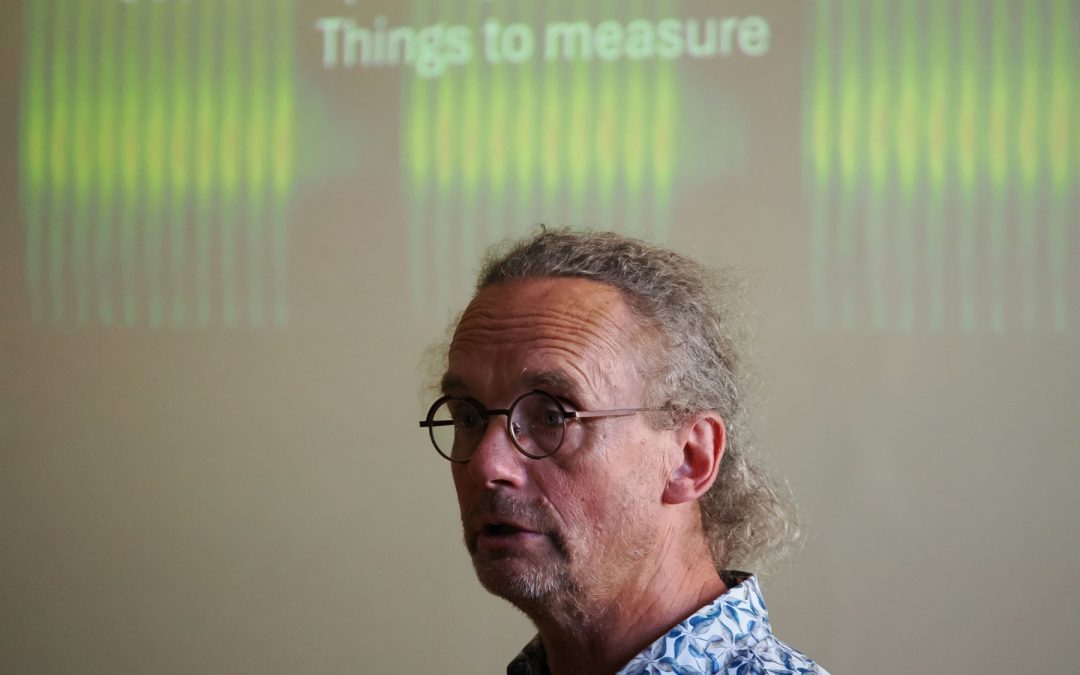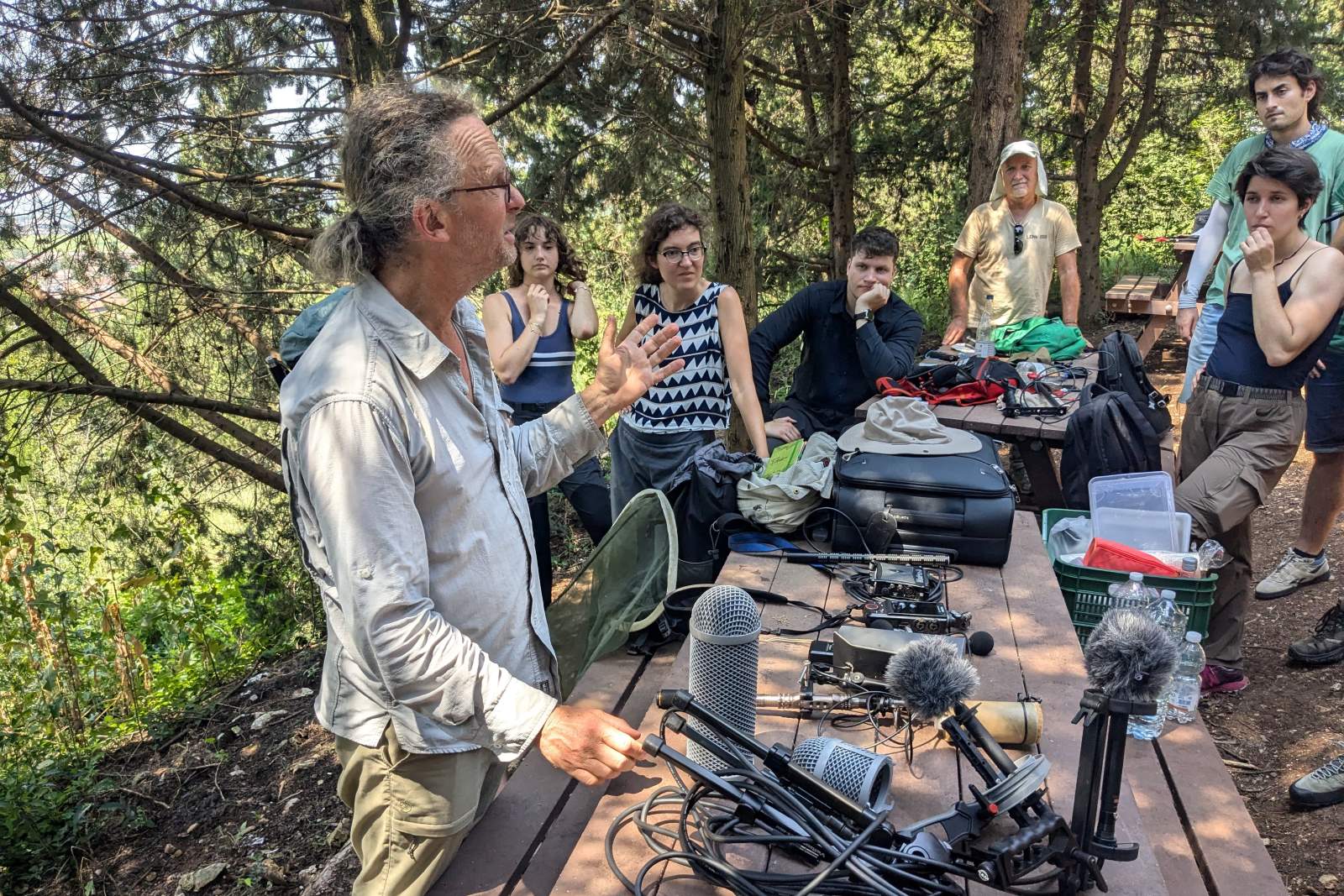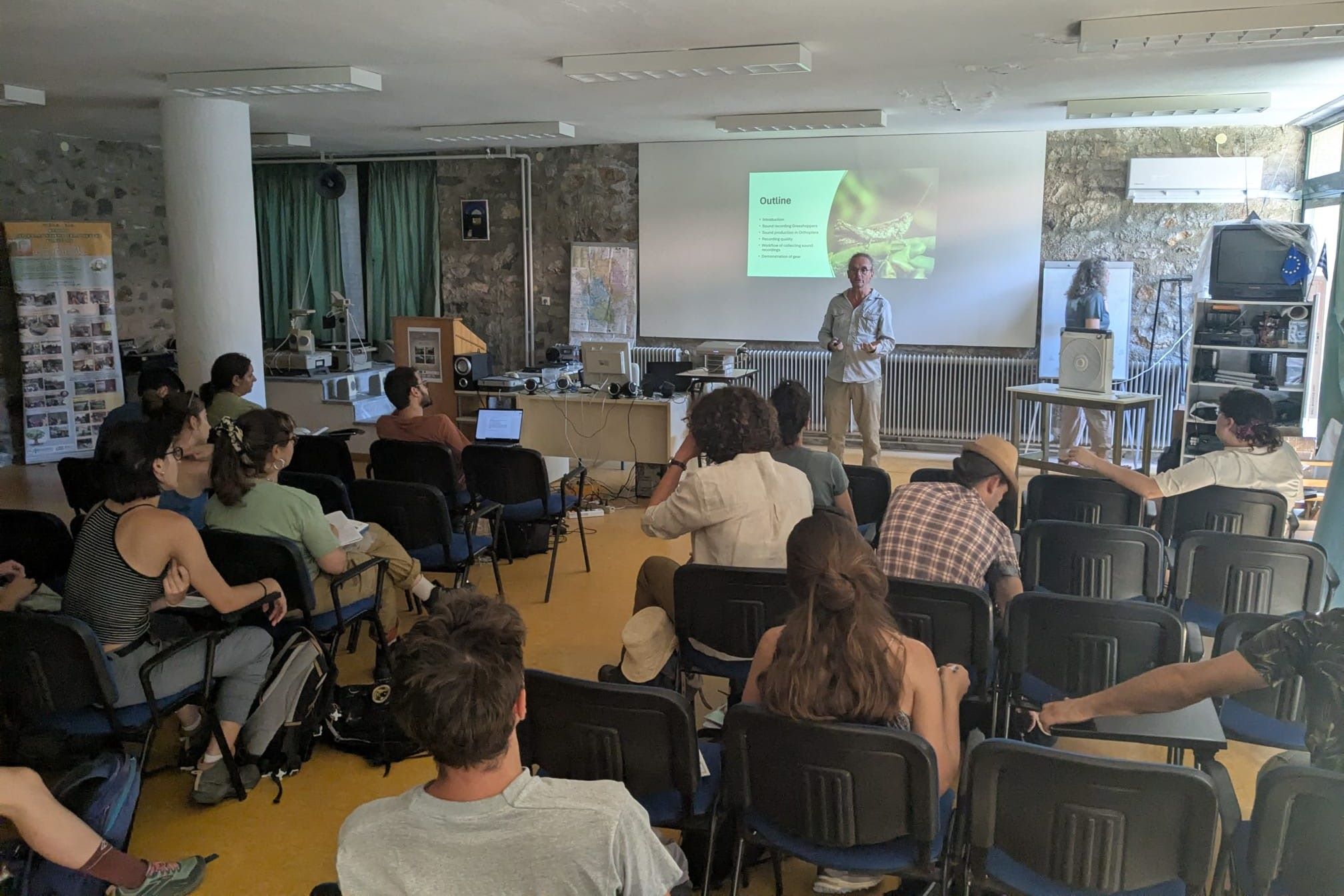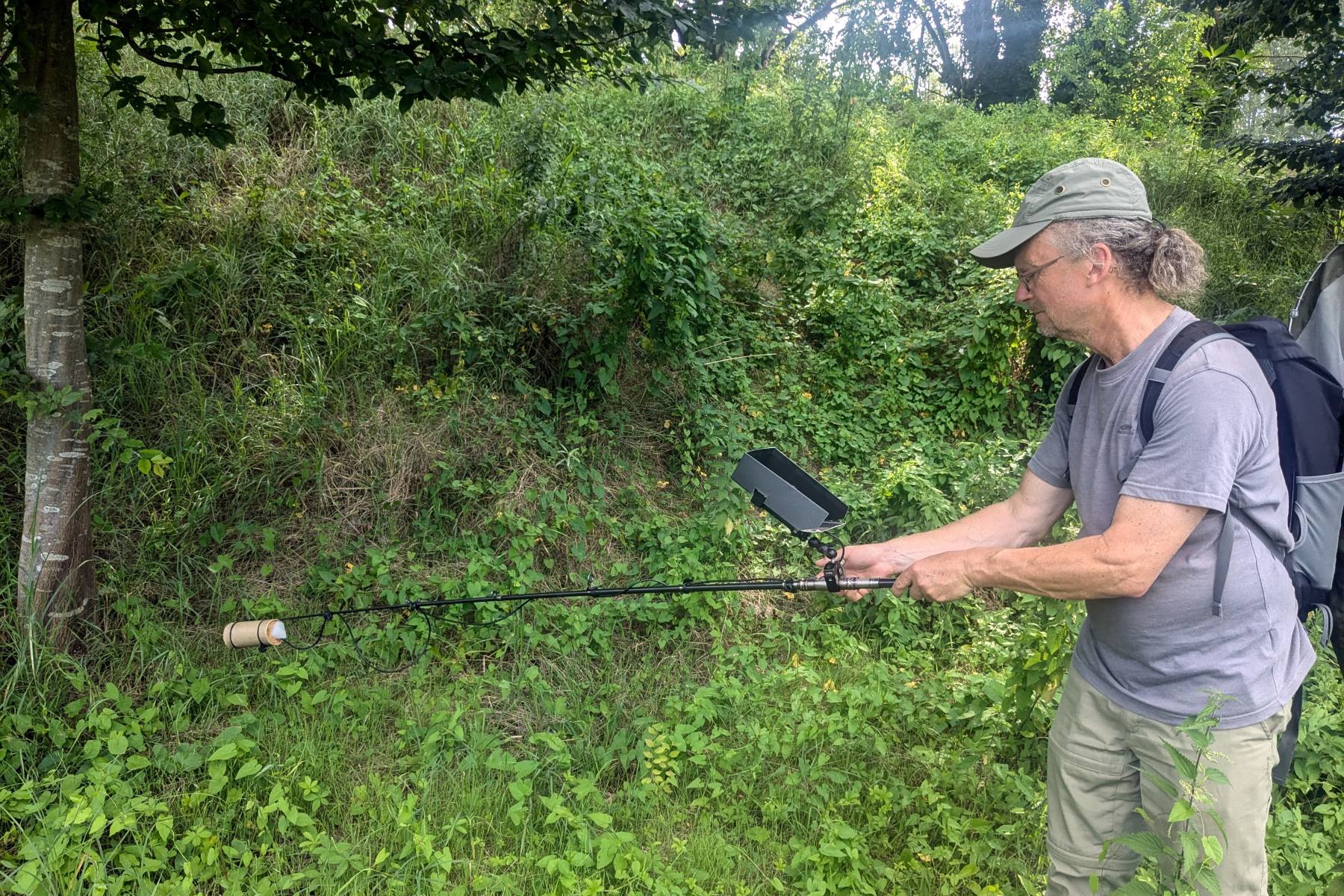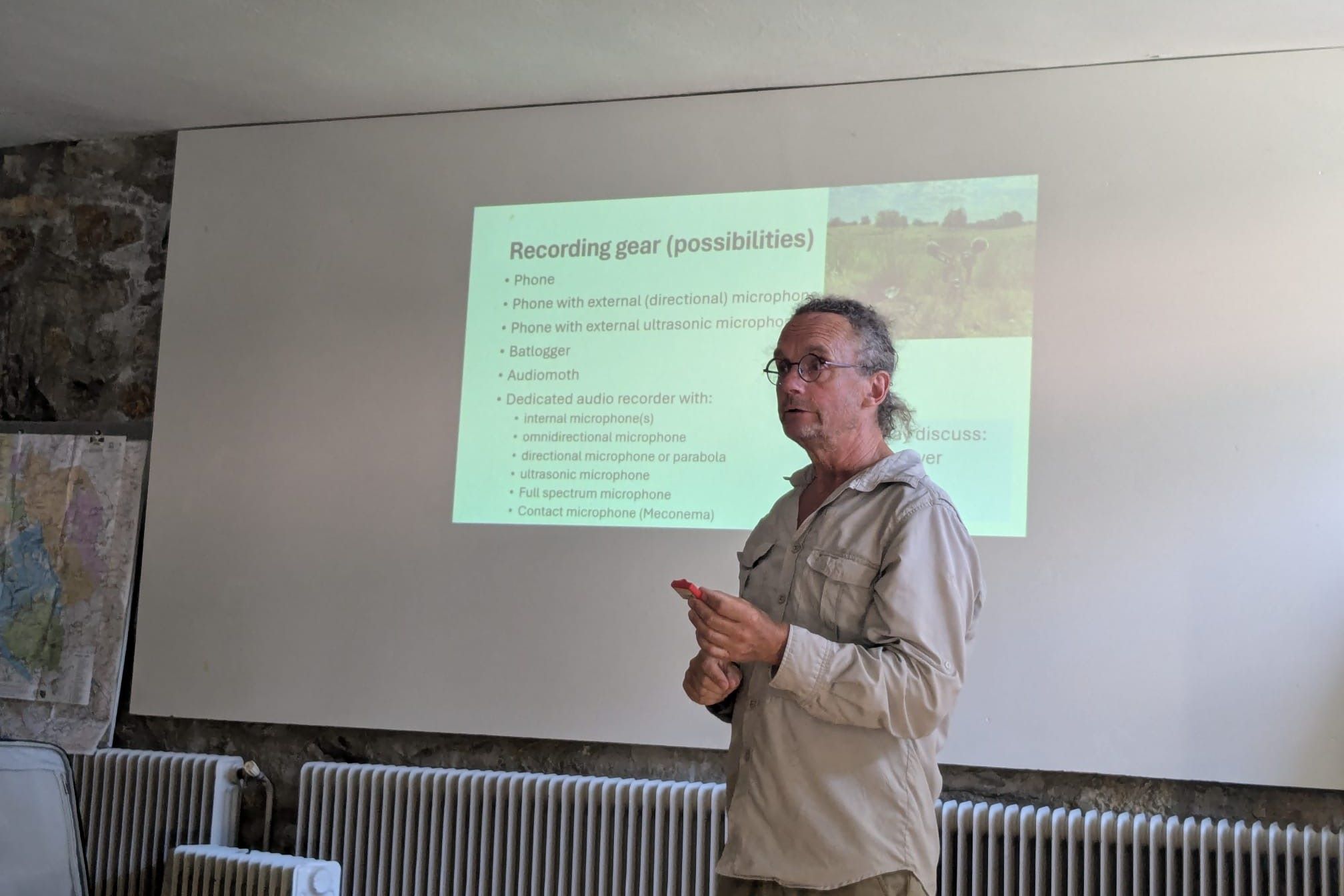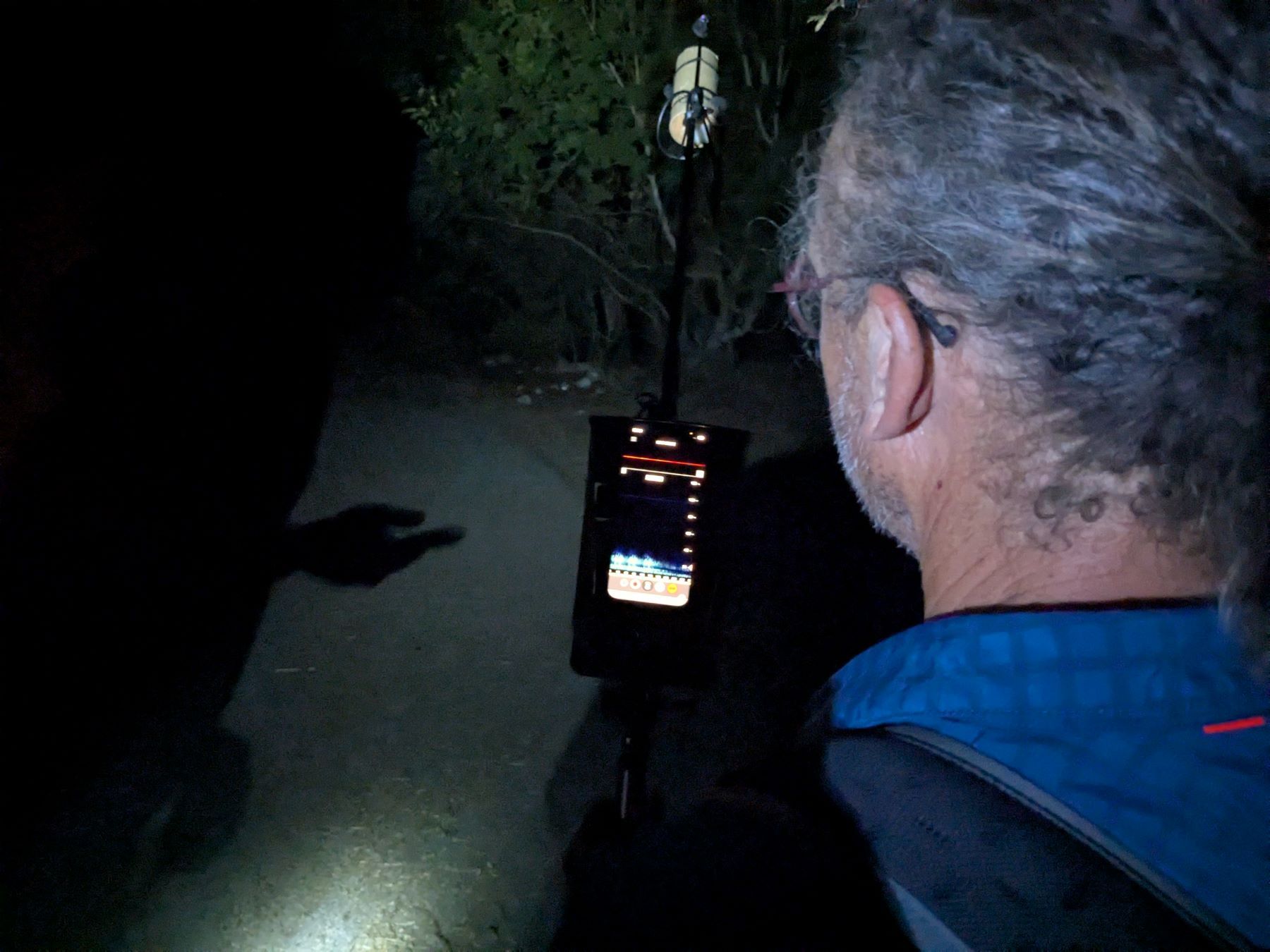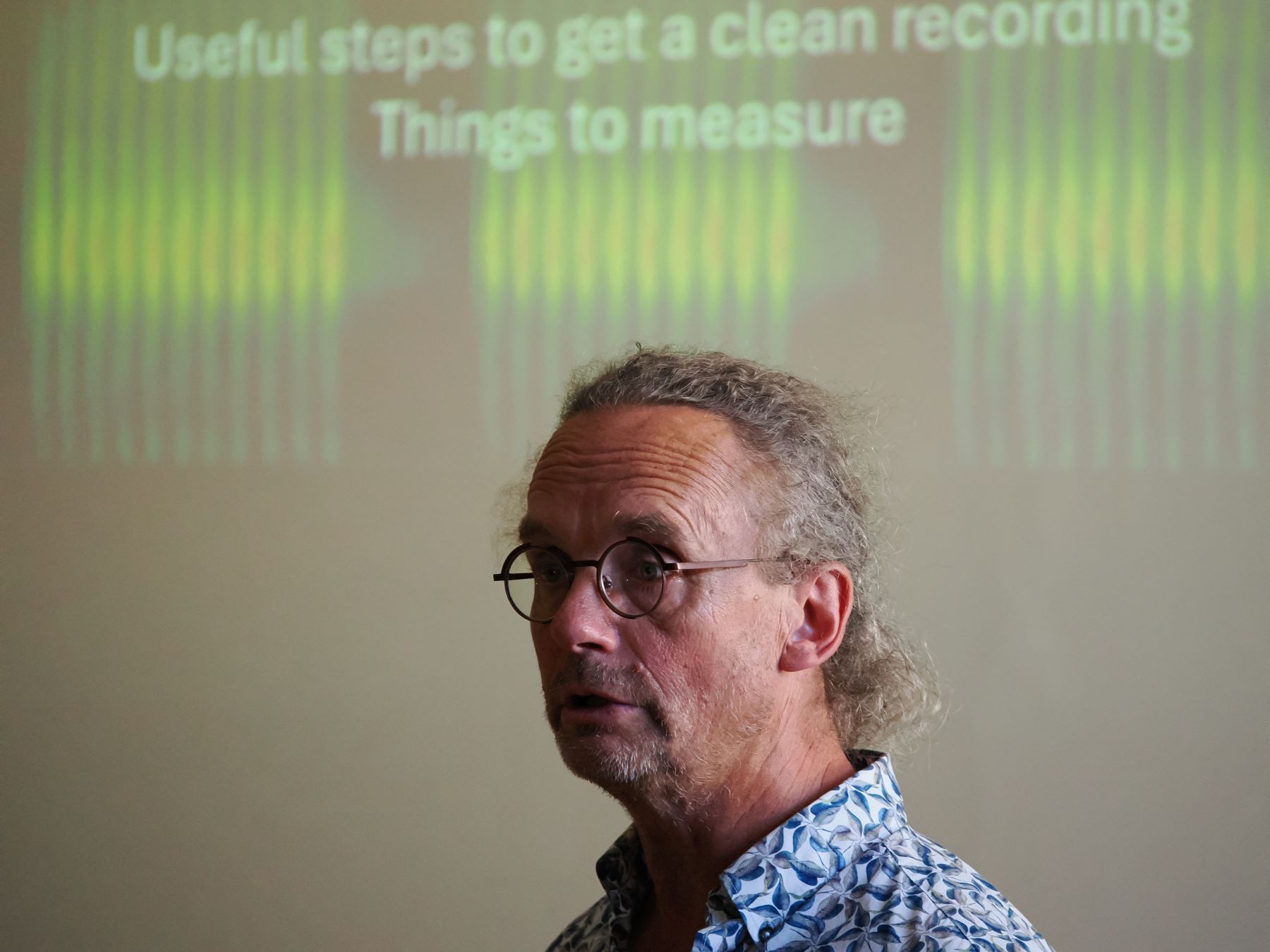Baudewijn Odé is a prominent Dutch researcher specializing in the bioacoustics of grasshoppers. His work focuses on the study and analysis of sounds produced by crickets, grasshoppers, and bush-crickets, significantly contributing to the field of acoustic entomology.
As a member of the IUCN Grasshopper specialist group, Odé has played a crucial role in developing and implementing methodologies for recording and analyzing orthoptera sounds and sharing sound recordings to facilitate field research to grasshoppers in Europe. His participation in the TEOSS (Training for the European Orthoptera Sound System) project has been fundamental in establishing standardized protocols for acoustic data collection across Europe.
Odé has led international workshops, such as the one held in Sierra de La Demanda, Spain, where he shared his expertise in field recording techniques and laboratory analysis. His focus on creating and expanding the Xeno-canto database to include orthopteran sounds demonstrates his commitment to accessibility and the sharing of scientific knowledge.
In addition to his technical work, Odé has contributed to developing innovative tools for studying bioacoustics, collaborating on specialized software like RThoptera. His experience spans from data collection in the field to detailed analysis of oscillograms and participation in scientific publications, making him a key figure at the intersection of technology and orthopteran biology and conservation.
Introduction to bioacoustics
How did you first become interested in the bioacoustics of Orthoptera?
Being a descendant in a musical family, I have always been interested in nature’s song. In 1990 I was struck by the fact that nobody knew Grasshopper songs. As soon as I saw the vivid communication between individual grasshoppers, I fell for diving into their acoustic and behavioural world.
What is the importance of bioacoustics in the study and conservation of these insects?
First of all, for many species listening is the major technique to identify species and discover their presence or abundance. Conservation always starts with knowing where a species resides, assessing their rarity and maybe population trend. Bioacoustics for many species are really helpful in this respect. However, secondly, I would argue that making sound communication aspects of these small animals available to a wider audience will greatly enhance the social support for this group, literally giving them a voice.
Methodology and techniques
Could you describe the workflow you use to collect and analyze Orthoptera sounds?
I apply different techniques in collecting sounds. I am both actively hunting in the field for singing specimens, but I also use passive acoustic monitoring, putting a recorder in the field for some time. Finally, to be able to produce high quality sound recordings of well-identified specimens, I record them in a small studio. All my recordings end up in a big database (using Soundminer software) with as much as possible metadata. Analysing sound recordings for me is for a large part listening, frequently listening at slow playback speeds (and not just for ultrasonic songs). When it comes to describing the characters of a song, I use software like Steinberg Wavelab and Audacity, making it possible to measure temporal and spectral characteristics. Recently, the free Rthoptera R-package has been added to my analysis tools.
What types of microphones and equipment do you recommend for fieldwork?
This really depends on your goal. If you are keen to record single specimens it really helps if you have a directional microphone (or parabolic microphone), or a microphone on some kind of rod (technically called boom pole) to be able to reach close to the singing animal, to be able to get rid of most of the surrounding noises. Being able to listen through headphones to be able to pinpoint the microphone before recording may help to record hidden grasshoppers.
On the other hand, you may want to record a chorus of different species, maybe as a part of a monitoring research, showing species diversity or seasonal or yearly changes. Then longer recordings (soundscapes) are useful. In these cases, you would want to have an omnidirectional microphone and depending on the deployment time, a long battery life of the recorder. Specialised recorders are available for these purposes, like Audiomoth and Batlogger.
In both cases standard recording quality (CD quality, 44.1 kHz) may be sufficient. However, many species produce mainly or partly ultrasonic songs. It may be advised then to use a recorder with a high sampling rate (e.g. 96 kHz) and microphones with a representation of ultrasonic frequencies. Especially ultrasonic microphones or recorders, used for bat monitoring, are suitable in such cases.
Projects and collaborations
Tell us about your participation in the TEOSS (Training for the European Orthoptera Sound System) project.
Participating in TEOSS really makes me happy, as I can help participants to study Grasshopper sounds and make them add to freely available sound recordings. Also, I am very happy to see that the study and conservation of Grasshoppers in general has a future with more people interested and involved..
How has your experience been collaborating with other researchers in international workshops?
I really enjoy international workshops, both to disseminate my knowledge and experience, but especially also to learn about other perspectives, knowlegde and needs of other researchers.
Challenges and advancements
What are the main challenges in recording and analyzing Orthoptera sounds?
For starting recordists I suppose species identification and analysis is a major issue. Although many sound recordings are freely available or their songs are described in publications, I tend to get a lot of questions on identification of sounds.
In the field, it is very difficult to both record a specimen and identify the specimen by its morphology, let alone to analyse and describe their songs. I really hope that in the near future with machine learning tools many people will be able to identify most European species. Yet, we do have a vast job to record and describe the songs of about 250 European species of which no sound recordings are available in public databases.
For me personally, sound recording and analysing is a free time activity, and my free time is always limited.
What recent advances in technology or software have improved your work?
Sound recording gear is still improving and has become affordable for many more people. For me, working with ultrasonic microphones and recorders is helping me a lot to not just focus on temporal but also on spectral characters of Grasshopper songs. In terms of analysing, I am a student learning to use R tools like Rthoptera to analyse sound recordings, but the potential of these tools is vast.
Xeno-Canto database
How does the Xeno-Canto database contribute to the study of Orthoptera bioacoustics?
Being largely open source, anyone studying Grasshopper songs can freely get to know anduse a lot of sound recordings of this group. Most sound recordings are georeferenced and contain a lot of relevant metadata, being valuable extra information for research.
What goals do you have to improve this database in the future?
Apart from achieving better species coverage in Europe and worldwide, I think adding automatic species recognition and song annotation would help to validate and improve the quality of the database. Also, this would facilitate analysing soundscapes for all singing species.
Conservation and biodiversity
How does bioacoustics contribute to the conservation of Orthoptera and biodiversity in general?
see question 1b.
What role does citizen science play in your research?
My own research may be regarded as citizen science, being conducted as a hobby. Being able to have a larger collection of sound recordings and observations, based upon citizens sharing their well-recorded and well-identified recording, helps me a lot with my own research.
Future of research
What are your future objectives in the field of Orthoptera bioacoustics?
I will certainly participate in recording European grasshoppers with no or little representation in the database of Xeno-canto.
As soon as new machine learning tools become available, I suppose I will participate in validating the quality of those tool.
At present, I am involved in research in the taxonomy of Italian wartbiter species, with sound recording analyses as my role.
I hope at some stage it will be technically easy to combine sound recording with leg or wing movement to better understand the mechanics of sound production.
What advice would you give to young researchers interested in this field?
Listen (and look) carefully to grasshoppers singing. You may discover new songs, new species or new behaviour. Furthermore, it would be great if young researchers would be involved in developing identification and analysis tools, not just to identify single species recordings, but also being able to identify all species in a soundscape. This latter technique would be very important to facilitate monitoring biodiversity in grasshopper communities.
Personal experiences
Could you share an interesting anecdote from your fieldwork
Long ago, I encountered a singing male of a field grasshopper, with an answering female. This is a rarely encountered event, but what stroke me especially, was the fact that I could feel the excitement of both animals, just before mating. Hence, I tend to see a parallel with human excitement in these small insects.
What has been your most exciting or surprising discovery in your career?
I suppose most surprising for me was discovering the song of Natula averni, Reed cricket. This is a very small and extremely difficult to find cricket. Until 2006 it was only known from one location in Italy. With two friends and hard labour we were able to find one in Turkey. After this discovery, we and several other orthopterists were able to find it throughout the Mediterranean area.

